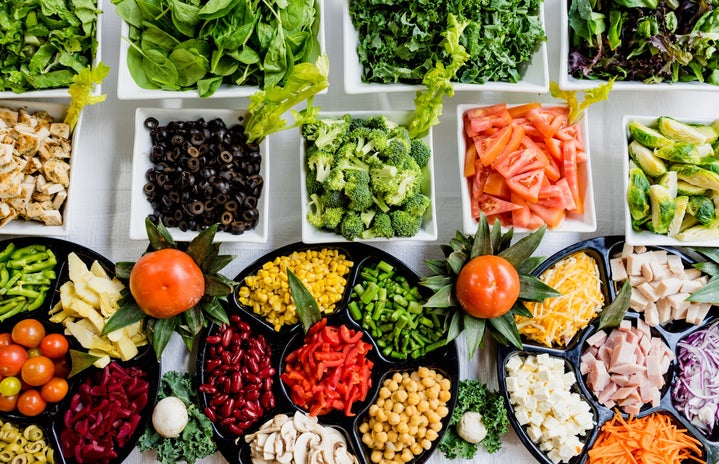Easter is a big deal in Eastern Europe. Growing up in Romania, I grew accustomed to my home and public places alike being decked with eggs and bunnies around Easter time. I even spent a few hours each year decorating my room for the season. Stores almost invariably shut down for Easter Sunday, if not Easter Monday as well. Schools always closed for Easter Monday so that families could celebrate together. To many, Easter is as important as Christmas. There are a few things Romanians do together on Easter that make the holiday special to them.
Of course, there is the food. One of the most important staples of a Romanian Easter feast is cozonac, a sweet bread with spirals of nuts and chocolate. There are also pieces of fruit flavored gummies with a similar consistency to Turkish Delight. We eat it during all of the holidays, and sometimes when we just feel like it, but Easter is one of the peak cozonac seasons.
One dessert that is particularly served at Easter is pasca. It is another sweet bread, but it has a different consistency because it is made with cream cheese. Usually, it has a light yellow color, a brown crust at the bottom, and a few raisins scattered throughout.
As far as savory foods, there is the salata de beuf. This is chopped boiled chicken and vegetables mixed with mayonnaise. Like cozonac, salata de beuf can also be served at Christmas or New Year’s. However, it does tend to be served more at the holidays, rather than every day.
Most importantly, we have boiled eggs. Like Americans, Romanians like to dye their eggs. Traditionally, we only dye eggs red, but western influence has inspired Romanians to dye their eggs multiple colors. The reason for red eggs is that, as tradition dictates, Mary, Jesus’s mother, put a basket of eggs under the cross as he died and his blood turned the eggs red.
One of the most important Romanian Easter traditions revolves around eggs. Each person in a family picks an egg, then people pair up. The first person says to the second person, Hristos a inviat (Christ has Risen), and the second person responds with adeverat ca a inviat (He has risen indeed). At this point, the first person will use their egg to try to crack the shell of the other person’s egg. The winner is the person with the surviving egg.
For Easter Sunday and Easter Monday, everyone, religious or not, greets each other with the phrases Hristos a inviat and adeverat ca a inviat. Whether the person you greet is family or a stranger, this is the social protocol.
Perhaps the most important tradition is the midnight mass the night before Easter. Again, people participate regardless of whether they consider themselves religious. Everyone goes to an Orthodox church, unlit candles in hand, to hear a priest sing a liturgy. When he finishes, he starts lighting the candles of those nearest to him. Those people in turn light the candles of the people nearest to them. This goes on until everyone has a lit candle.
At this point, the priest leads the people in a traditional Easter song, which roughly translates: Christ has risen from the dead/ Trampling over death/ And those in the grave/ Receive life. The entire crowd sings the song several times in unison. It gets to be a little off key and more than a little repetitive, but with hundreds of people holding candles at midnight, it has an almost mystical feel.
One of the things I most miss about home is celebrating Easter. I tend to get sad at about this time of year because Easter simply isn’t as big of a deal in America as it is in Romania, and even if it were, I would miss the Romanian traditions. But each country has its holiday traditions which make it unique, and I’m learning to appreciate the ones here in the U.S.
Want to keep up with HCBU? Make sure to like us on Facebook, follow us on Instagram, check out our Pinterest board, and read our latest Tweets!


